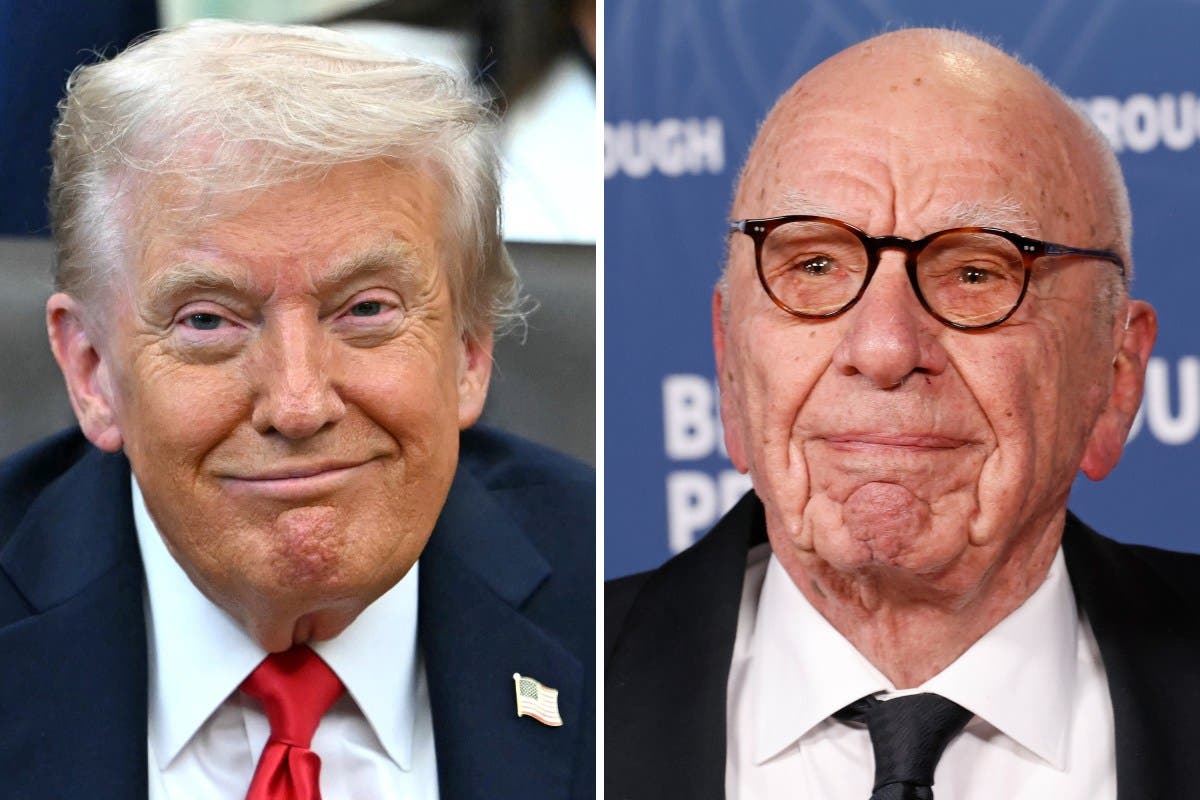President Donald Trump has asked a federal judge to let his defamation suit against The Wall Street Journal move forward, arguing that the newspaper’s coverage of an alleged 2003 letter linking him to Jeffrey Epstein was “deliberate and malicious.”
Newsweek contacted attorneys for Trump and the WSJ via email for comment outside of normal office hours on Tuesday.
Why It Matters
The case tests the boundaries of press freedom and accountability in an era when political figures routinely challenge the media’s credibility. By accusing The Wall Street Journal of publishing an unverified letter linking him to Epstein, Trump is not only defending his own reputation, but also seeking to redefine how far journalists can go when reporting on controversial materials tied to public figures.
The outcome could influence future defamation claims against major news organizations, reshape how outlets verify sensitive sources, and further strain the already fraught relationship between Trump and Murdoch’s media empire.
What To Know
Trump’s Filing: Claims of Reckless Reporting
In a filing submitted October 20 in the Southern District of Florida, Trump’s lawyers said the Journal and its parent company, News Corp., along with Murdoch and senior editors, “prioritize gossip, clicks, and profit over truth.”
The filing responds to the defendants’ motion to dismiss the suit, which claims the newspaper’s reporting was substantially true and protected by the First Amendment.
The dispute centers on a July 17, 2025, Wall Street Journal article titled “Jeffrey Epstein’s Friends Sent Him Bawdy Letters for a 50th Birthday Album. One Was From Donald Trump.”
The story described a purported letter “bearing Trump’s name” contained in a compilation of greetings to Epstein, which the paper said was assembled by the disgraced financier’s associate Ghislaine Maxwell. Maxwell was convicted in 2021 of sex trafficking minors.
Trump’s filing argues the paper falsely asserted that he authored and sent the letter, saying its publication “was fully driven by defendants’ salacious and scandal-driven narratives.”
His attorneys said the Journal failed to authenticate the document before publication and “did not possess, or even review, any purported letter before publishing.”

The response accuses the Journal of framing its coverage to make Trump’s denial appear untrue. “Although defendants included plaintiff’s denial, they did so in a way that made it seem as if plaintiff’s denial was false,” the filing states. “This kind of reckless disregard for the truth by defendants provides a sufficient basis for an inference of actual malice.”
The Journal’s Defense: Substantial Truth and Public Figure Standards
Trump’s legal team argues the article was defamatory both per se—because it allegedly subjected him to “hatred, disgust, ridicule, contempt or disgrace”—and per quod, requiring additional context to show harm to his reputation.
The filing says the piece “wrongly and inextricably link[ed] President Trump to the disgraced Epstein,” and that the Journal’s use of phrases such as “one of them was Donald Trump” left readers with the impression that he was a willing participant in the birthday project.
The Journal has sought dismissal of the case, citing its reliance on official documents.
In its motion, the newspaper argued the article was substantially true because the letter appeared among materials reportedly produced by the Epstein estate in response to a congressional subpoena.
The defense also contends that Trump, as a public figure, must show actual malice—proof that the Journal knew its reporting was false or acted with reckless disregard for the truth—and that the complaint fails to do so.
Broader Implications
Trump’s attorneys countered that the Journal could not reasonably rely on materials tied to Maxwell, “a convicted sex trafficker,” to verify authenticity.
They claim the story’s “mean-spirited tone” and the Journal’s alleged hostility toward Trump support an inference of malice.
The filing further argues that including Trump’s denial did not negate defamation liability, citing precedents such as Connaughton v. Harte-Hanks Communications (1988), where courts found that printing a subject’s denial does not shield a publisher if falsehoods are otherwise printed knowingly or recklessly.
The response also rejects the defendants’ attempt to invoke anti-SLAPP (Strategic Lawsuits Against Public Participation) statutes—laws designed to deter frivolous suits over speech on public issues—saying Trump’s claims are “not without merit” under either Florida or New York law.
Trump is seeking damages for reputational harm and what his lawyers call “overwhelming financial and reputational damages.”
He also requested oral argument, saying the court would benefit from further discussion about whether the Journal’s reliance on outside materials was appropriate at the dismissal stage.
The defendants, represented by Davis Wright Tremaine LLP and Gunster, Yoakley & Stewart, have not yet filed a reply to Trump’s latest motion.
A hearing date has not been set.
If the case proceeds, it will test how courts interpret media responsibility when reporting on materials tied to convicted figures like Maxwell, and whether Trump—who remains a declared presidential candidate—can meet the high constitutional standard of proving “actual malice” in a defamation suit against a national news organization.
What People Are Saying
President Donald Trump regarding the matter told The Los Angeles Times July 17, 2025: “This is a fake thing. It’s a fake The Wall Street Journal story,” adding in Reuters July 29: “I’ve been treated badly by The Wall Street Journal…They are talking to us about doing something, but we’ll see what happens.… when I get treated unfairly, I do things about it.”
Lawyers for The Wall Street Journal and its parent company said in their motion to dismiss: “This meritless lawsuit threatens to chill the speech of those who dare to publish content that the president does not like.”
Shawn Trier, a constitutional-law expert told ABC News: “In the case of The Wall Street Journal, it would literally have to be the case that they knew the letter was false or knew it didn’t exist or they had a really good reason to suspect it was forged but ignored it.”
What Happens Next
The Wall Street Journal and its co-defendants will file a reply to Trump’s October 20 opposition, after which U.S. District Judge Darrin P. Gayles will decide whether to dismiss the case, allow Trump to amend his complaint, or let it proceed to discovery.
If the motion is denied, both sides would exchange evidence—potentially revealing the Journal’s internal editorial process and Trump’s communications related to Epstein—before any trial or settlement talks. Trump’s lawyers have also asked for oral argument, which the judge may grant before ruling.
Politically, the lawsuit keeps Trump’s feud with Murdoch’s media empire in the spotlight as he continues to claim the mainstream press acts with bias against him.

